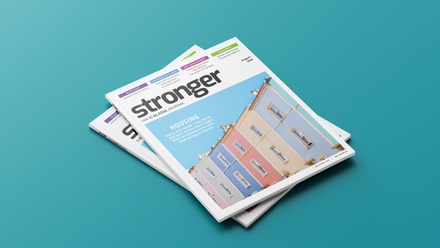When drawing up any leasehold agreement, clarity is key. Neither the landlord nor the tenant want any nasty surprises in the event of an insurance claim or when the lease ends.
Repairs and dilapidations – what are the unforeseen costs?
Depending on the type of premises, a commercial lease often contains obligations on the tenant to return the property in a set condition at the end of the lease. The extent of these obligations differs, and the required repairs can make a massive difference to the costs over the life of a commercial lease.
A full repairing obligation means the tenant must repair anything in disrepair, whatever the condition of the premises at the time the lease was granted. This cost could ultimately outweigh the total rent paid, and unless the tenant has clearly understood the terms of the lease, it can become a huge point of contention.
Service charge – what does it cover?
Where the property forms part of a larger commercial or residential building, the landlord must be clear about what items of expenditure are included in the service charge.
Depending on the size of the tenant’s demise and the term of the lease, it might be reasonable that they should only be responsible for part of the cost of emptying bins, for example. However, a lease may also make the tenant liable for paying towards roof repairs.
As a landlord, you should list what costs will be incurred during the term of the lease and make sure these are incorporated. If you want to cover unforeseen circumstances, the wider the list, the better. The tenant should be fully aware of their contribution to these costs and have access to service charge accounts.
Demise – what is the exact area of the leasehold property?
The demise covers the extent of the area the tenant is responsible for and can occupy, so the tenant must be clear about what is and isn’t included.
For instance, in a commercial lease the tenant may need access along a corridor to get to the property. However, they only need rights of access over the corridor and may contest that they shouldn’t be responsible for maintenance or repairs, even if they’re the only person using it.
There are other considerations in commercial leases, such as air conditioning. Does this form part of the demise, and who pays when there’s a breakdown?
Insurance obligations – who insures what?
The insurance requirements must be precise regarding what’s included in the landlord’s building's policy and what the tenant needs to insure separately. Fixtures and fittings can be expensive for the landlord to replace if there’s a gap in cover.
Where the property has been subject to an insurance claim due to a fire or escape of water, for example, which was covered by the tenant’s policy, it should be checked that repairs were carried out correctly and any guarantees are transferred to the landlord.
Works and alterations – who’s responsible?
If a commercialtenant needs the building sub-divided into, say, clinical examination rooms, then who will bear the cost? As an incentive, the landlord may agree to carry out these works, but who owns or has responsibility for the fit-out in the event of an insurance claim? And will these alterations need to be removed at the end of the lease?
It’s also worth clarifying what works can be carried out during the term of the lease without the landlord’s permission.
Sharing and sub-letting – who’s allowed to share the space?
The lease usually stipulates and controls who occupies and shares the premises, and in the public sector, this might not be just the tenant. A lease to an NHS body, for example, might need to cater for various third-parties, including private enterprises and charities.
If the landlord isn’t aware of who’s using the premises, how will they know who’s liable if there’s an insurance claim? The lease should identify what permissions are required for assignment to other providers of the tenant’s services or in case of a change in the contract provider or organisational structure.
What to look out for in 2024
For residential leases, the Leasehold and Freehold Reform Bill was published on 27 November 2023. The Bill proposes to make it easier and cheaper for tenants to extend a long leasehold agreement or acquire the freehold. Other points under consultation include capping ground rents in long leaseholds, with zero compensation for loss income for landlords under the five suggested ground rent capping methods.
The Law Commission has also announced a consultation on the security given to commercial tenants by the Landlord and Tenant Act 1954, which is due to be launched early next year. So there will be more for landlords to carefully consider and review in short and long-term lease arrangements over the coming months.
Talk and keep talking
Sedgwick’s Legal Services Team often get involved in leasehold issues that arise from an insurance claim or disputes over damage to buildings, fixtures and fittings. Even a well-drafted lease can be exposed when something goes wrong, and grey areas cause a debate or even a dispute over liability, which delays repairs and generally increases costs.
Open discussions at the heads of terms stage, when the lease is drafted and negotiated, will help clarify the position for everyone.
Top five tips:
- Be aware of new legal requirements and make sure the tenant understands the draft lease at the outset.
- Be absolutely clear about cost expectations in repairs and dilapidations and service charges.
- Clarify what alteration works the tenant can carry out and who is responsible.
- Clarify if sub-letting or sharing is allowed.
Review landlord and tenant insurance cover – check for gaps.



